It’s easy to find an ergonomic, cutting-edge mouse on the market nowadays that is also fast, accurate, and full of features. Also, contemporary designs lessen the likelihood of hand fatigue even after prolonged use. Most of the mice you come across will either be too pricey or of an awkward form. So, which mouse offers software developers the most incredible balance of performance, comfort, and cost? Long-term mouse use may cause a variety of issues, the most effective approach to avoid them is to use a model that enables you to maintain your hand in a neutral posture. Choosing the most delicate mouse for programmers among the many on the market may be time-consuming. Therefore, we will not only provide you with a list of mouse models but also discuss the most crucial characteristics to look for.
At a Glance:
- Logitech MX Master 2S
- VicTsing Pioneer
- Corsair Nightsword RGB
- Logitech G602
- Razer Viper Mini
- MSI Clutch GM50
- Dell Premier WM527
- Logitech M720
- Razer Basilisk X
- Lenovo Laser 0A36188
- Logitech M557
The Best Programmer’s 11 Best Mice Of 2022 That You Can Buy Today
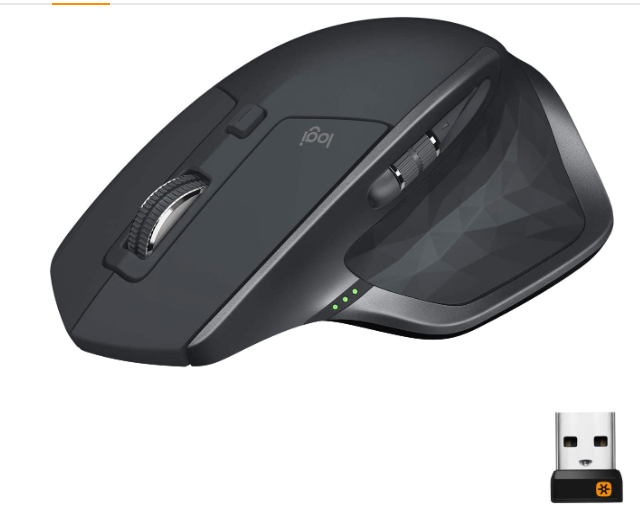
Logitech MX Master 2S
Best Logitech Wireless Mouse
SPECIFICATIONS
Ergonomic: right-handed; DPI: 4000; Wireless interface: 7 buttons
Pros
✓ Convenient button customization
✓ Works on almost all surface types
✓ Seamlessly transition between PCs
✓ Customizable CPI options
Cons
✗Not suitable for left-handed users
✗Not the best option for FPS games
In addition to its high-quality performance, the MX Master 2S covers all the bases in terms of features. On top of the standard fare of low latency, excellent precision, and button customization, it also boasts a sturdy construction and comfortable grip. Its ergonomic design makes it ideal for programming and general use since your hand won’t weary even after long sessions. This mouse is compatible with Windows and Mac computers and can be connected to up to three devices at once, making it ideal for using various machines. The only drawback is that being very bulky and heavy, and it is not the most easily transportable mouse.
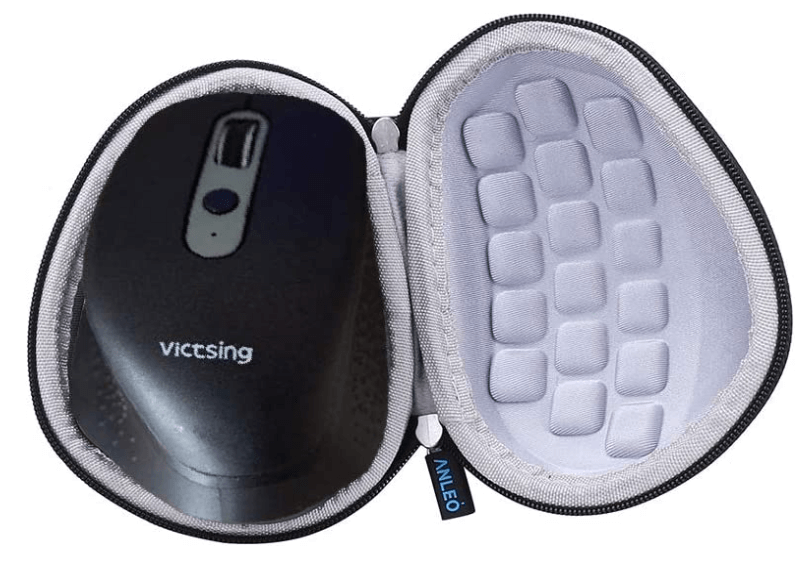
VicTsing Pioneer
Best Anleo Hard Travel Case
SPECIFICATIONS
DPI: 3200 | Interface: Bluetooth | Buttons: 7 | Ergonomic: Right-handed |
Pros
✓Can be connected up to 3 systems simultaneously
✓The simple transition between 3 modes
✓Ergonomic design
✓Convenient 5 DPI settings switching
Cons
✗Side scroll button only on macOS
✗Double-clicks fail to work occasionally
Aside from being an excellent programming mouse, this paradigm is very generalizable. The Pioneer can be remotely linked to two computers or laptops simultaneously thanks to its multiple Bluetooth capabilities. Simply clicking a button toggles between available systems. This compact mouse provides several advantages for those who spend long periods in front of a computer, such as its ability to be recharged quickly for on-the-go usage, its side-scrolling wheel, its fast and accurate cursor for video games, and its ergonomic design. The included non-slip grip improves the Pioneer’s already comfortable handling. Tablets benefit greatly from quiet clicking and sideways scrolling, two additional convenient features.
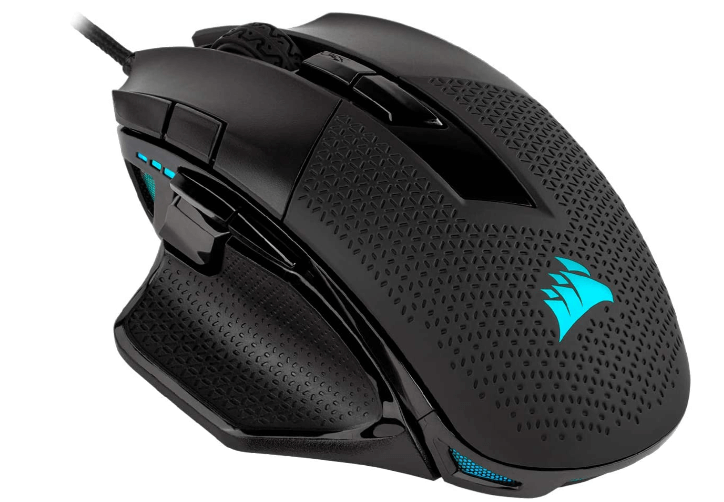
Corsair Nightsword RGB
Best Ultra Nightsword RGB Mouse
SPECIFICATIONS
DPI: 18000 | Interface: USB | Buttons: 10 | Ergonomic: Right-handed |
PROS
✓Adjustable weight mechanism
✓Additional thumb support
✓Efficient sensor with granular level setting
✓Perfect RGB light design
Cons
✗Primarily for users with large hands
✗A hand can slip due to the shape and rubber grip
It adds 10 buttons, a high-performance sensor, movable weights, and better thumb support to the previous model. The mouse has a lot of excellent capabilities and is perhaps in the top tier of programming mice, but it also has a few drawbacks. The mouse’s bulky size and awkward design offset outstanding performance, which may make it difficult to control. Even if you have huge hands, it’s not a dealbreaker, but you should try this model before buying it. There are 10 buttons on this mouse, and it’s optimized for right-handed usage. The increased thumb support and other capabilities make it the ideal choice for first-person shooters and multiplayer online battle arenas, where you must aim with pinpoint accuracy.
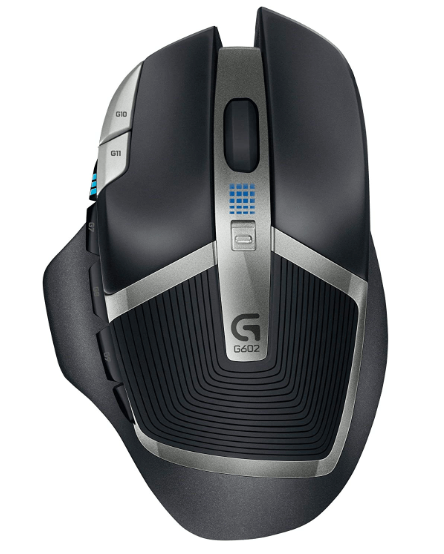
Logitech G602
Best Wireless Gaming Mouse
SPECIFICATIONS
DPI: 2500 | Wireless Interface | 11 Buttons | Right-handed Ergonomics |
Pros
✓Reliable design and functionality
✓Convenient performance customization
✓Offers a great palm grip
✓Terrific DPI switching
Cons
✗Large and somewhat heavy build
✗No max CPI
It has a DPI setting between 250 and 2500 on this mouse. The minimum amount is unusable for anything beyond web browsing and simple programming, while the maximum value is about what you’d need for gaming. Although it lacks mobility, this mouse provides fundamental functionality and a durable design and is well suited for playing massively multiplayer online games. The G602 has excellent ergonomics, so people of varying hand sizes can easily use it. It’s battery-free and convenient for when you need mobility. The included software is simple to set up and compatible with both Windows and Mac computers, and the mouse’s buttons are remapped to suit your preferences.

Razer Viper Mini
Best Ultralight Wired Gaming Mouse
SPECIFICATIONS
DPI: 8500 | Interface: USB | Buttons: 6 | Ergonomic: Right-handed |
Pros
✓Incredibly lightweight
✓For users with small hands
✓Low price
✓Cool RGB lights
Cons
✗New but cheap sensor
✗Not wide for larger hands
✗Isn’t significantly more lightweight than the regular Viper
Thousands of programmers had been hoping for a new rival for the best programmer mouse, and when this model was initially announced, they went wild with excitement. After a string of duds, Razer produced a mouse that excels at extreme gaming and rapid-fire programming. Among the many lauded aspects of this model are its portability, cable pliability, sensor excellence, and onboard memory. Since the standard Viper mouse is gigantic, releasing this compact variant is welcome news for those who need a smaller device or have smaller hands.
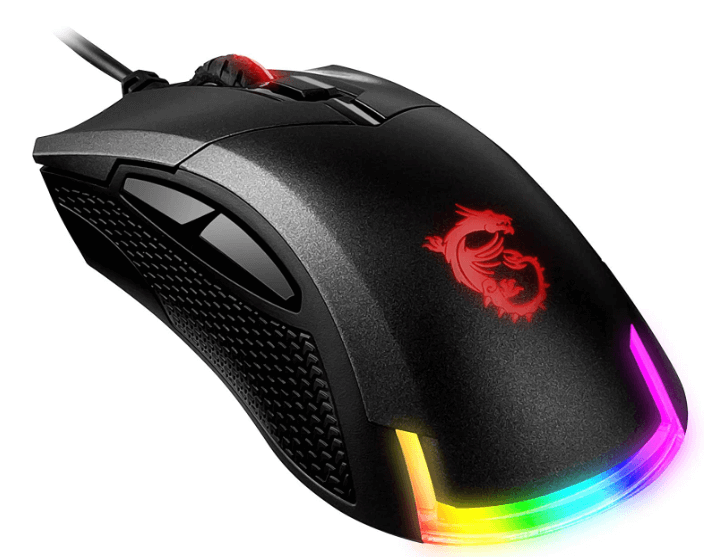
MSI Clutch GM50
Best MSI Clutch GM50 Gaming Mouse
SPECIFICATIONS
DPI: 7200 | Interface: USB | Buttons: 6 | Ergonomic: Right-handed |
Pros
✓Reasonable price
✓Allows customizing 6 buttons
✓Lightweight and convenient
Cons
✗Impossible to determine what DPI setting is currently active
✗Comes in a single color
The GM50 is mainly advertised as a gaming model because of its lightweight body, ergonomic design, and comfortable grip; these features are ideal for first-person shooter games. In a happy coincidence, these are also the characteristics that set apart the top mouse for programmers. The ability to personalize the experience, shortcut keys, and RGB lighting are different standout features. You’ll be pleasantly surprised by the GM50’s responsiveness and accuracy if you take a break from coding to play first-person shooters or action games.
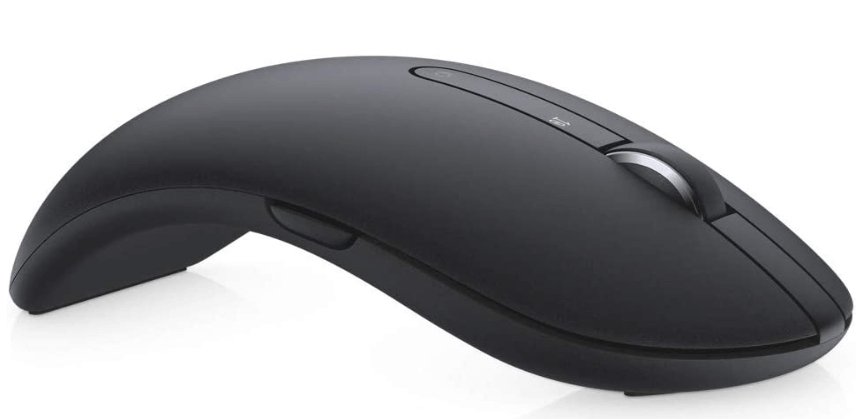
Dell Premier WM527
Best Premier Wireless Mouse
SPECIFICATIONS
DPI: 1600 | Interface: Wireless | Buttons: 5 | Ergonomic: Ambidextrous |
Pros
✓5 adjustable buttons
✓Convenient design that suits the palm perfectly
✓Customizable CPI settings
Cons
✗Not suitable for left-handed people
The WM527 deserves its reputation as one of the most acceptable mice for programmers due to its high level of comfort and portability. Its 1,600 DPI laser sensor works well, even on smooth surfaces like glass. To utilize the mouse, you may hook it up via Bluetooth 4.0 or the 2.4GHz wireless connection. You may minimize the number of wires and gadgets you have to lug about by pairing the included USB receiver with up to six different devices. Moreover, the mouse’s dual connection ports make it possible to use it with not one but two PCs or laptops at once.
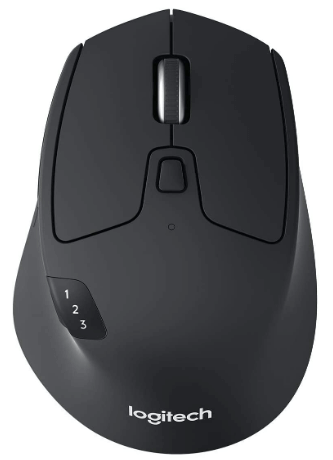
Logitech M720
Best Multi-Device Wireless Mouse
SPECIFICATIONS
Brand: Logitech | Interface: Wireless | Buttons: 8 | Ergonomic: Right-handed |
Pros
✓Comfortable for the hand
✓Robust body
✓Easy-access dongle storage
Cons
✗“Multi-device” support is restricted to the computer OS
✗Super sensitive scroll
Due to its ergonomic design, this wireless mouse is considered one of the most acceptable options for programmers. The ability to rapidly switch between three different devices is a significant plus, as is the fact that it can link with them via either the USB dongle or a Bluetooth channel. However, since it cannot pair with iOS devices through Bluetooth, this mouse may not be the best choice for those users. Odd, as the K780 keyboard is closely related and works flawlessly with every platform. The article explains that the keyboard has a built-in touchpad, so the user doesn’t have to fumble with many gadgets.
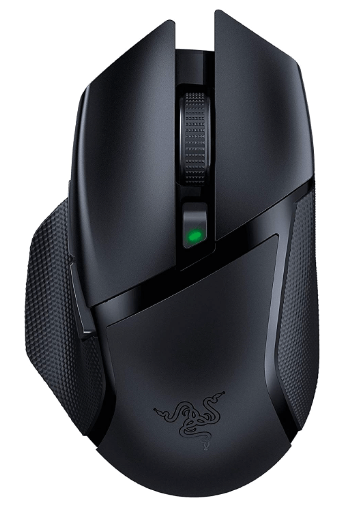
Razer Basilisk X
Best Hyperspeed Wireless Gaming Mouse
SPECIFICATIONS
DPI: 16000 | Interface: Wireless | Buttons: 6 | Ergonomic: Right-handed |
Pros
✓Two alternatives for connectivity
✓Long battery durability
✓Superb performance
Cons
✗No wired backup
✗Lack of DPI indicator
There’s an even fancier version of this mouse called the Ultimate, but it’ll set you back a little more cash. In all honesty, holding any one of them is essentially the same. The cost of the last item is more since it has better quality feet fitted; however, this upgrade may not be necessary. The mouse is 130 mm long, 60 mm wide, and 42 mm high. Once you insert the battery, the total weight should be slightly over 100 grams. Handlebars conceal the power and network connection controls. It’s a pity that custom weights aren’t provided since removing them reveals plenty of space for them. Regarding personalization, the Razer Basilisk X is the most acceptable developer mouse. The program lets you set the DPI and provide shortcuts to the additional buttons. Many users report never touching the default settings since they are so flexible.
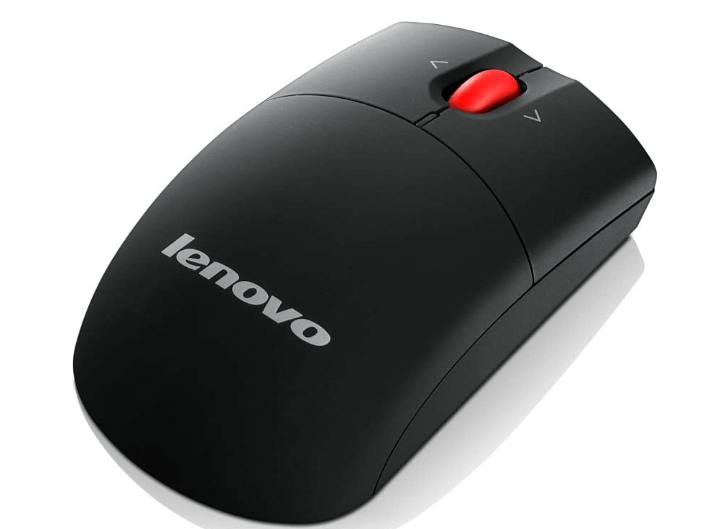
Lenovo Laser 0A36188
Best Laser Wireless Mouse
SPECIFICATIONS
DPI: 1200 | Interface: Wireless | Buttons: 3 | Ergonomic: Ambidextrous |
Pros
✓Luscious soft-touch finish
✓Symmetric body shape for both hands
✓The tilt wheel enables side-scrolling
Cons
✗No DPI indicator
This top-tier programming mouse employs Bluetooth 3.0 technology to connect to your devices. A tiny USB dongle is an option for computer users that lack the necessary software or hardware. It’s easy to move quickly and precisely thanks to the sensor’s high 1200 DPI resolution. Although it lacks more buttons, it does offer a practical side-scrolling capability. All individuals who deal with large amounts of text will benefit from it. The package includes two batteries so that you can go to work immediately.

Logitech M557
Best Bluetooth Mouse – Wireless Mouse
SPECIFICATIONS
DPI: 1000 | Interface: Bluetooth | Buttons: 4 | Ergonomic: Ambidextrous |
Pros
✓Robust build
✓Entirely noiseless wheel
✓Logitech software allows configuring the mouse actions
Cons
✗Hefty with the batteries in
✗Too miniature for medium and big hands
The Logitech M557 is the most acceptable mouse for programmers since it has Bluetooth connectivity, is compatible with all operating systems, and can be used with several devices simultaneously. The gadget is quick to respond, easy to use, and handy; it has a long battery life (up to a year) and can be used either hand. Four-way scrolling and a dedicated Start Screen button are both fantastic time savers. In addition, the brand’s adaptable software may be tailored to your specific requirements to improve productivity in the workplace.
Is There a Preferred Mouse for Coding?
The most acceptable mouse for programmers, in addition to the monitor and keyboard, can facilitate and speed up the process. Due to their work and the long hours spent in front of a computer, professional developers cannot utilize the standard office models. An ergonomic design is essential to avoid unnecessary stress on the developer’s wrists and hands. Proper planning is essential for both health and productivity. Among the characteristics that boost productivity, tracking sensitivity and cursor accuracy stand out as the most important to consider before moving on to portability or the programmable buttons.
What to Look for When Choosing a Mouse?
This variety of options makes it simpler to meet even the most specific needs, but it also makes it more challenging to zero down on the most acceptable mouse for programmers. In addition, there is a wide range of styles and features, all of which might confuse the average user. If you take the time to read this section, you’ll be able to choose the best tool for your profession. This article and the accompanying list of the year’s most excellent tools can be invaluable in your search for the ideal resource.
Requirements to Mouse for Programming
For programmers, the most practical and helpful mouse is the one that conforms to your hand and grip. Reduced fatigue and fewer potential health problems are only two benefits of a well-fitting device. You may discover more unique options, such as a trackball or a vertical controller, among the standard mouse designs with minor upgrades. Despite their odd appearance, such techniques have advantages and seem relatively simple to adapt. What you see up top are the user-rated entries that have performed the best.
How to choose the best mouse for programming?
The mice have come a long way in the previous ten years, from those that mainly relied on a ball for movement tracking to today’s laser and optical sensor mice, which, depending on their quality, function pretty well on most surfaces. This piece aims to shed light on a few exciting avenues of research and development in the mouse industry. However, you must also know how to pick the most suitable mouse for your programming needs.
Types of mouse
For computers without touch screens, the mouse is likely an indispensable accessory. It’s remarkable to observe how many distinct mouse options exist, each tailored to a unique set of circumstances. The ball mouse was the dominant kind for a time. It must be used on a flat, stable surface and regularly cleaned. Then, the optical idea came up, and we had laser and LED mice, which ultimately did away with the need for wires.
The sensors of a computer mouse may be optical or laser; illustrated versions are more accurate than laser ones, although they aren’t always great on different surfaces. Laser mice are more fitted to covers better to grasp the defects of even the smoothest materials since the laser light is more penetrating. All modern gaming mice have optical sensors, which provide pinpoint precision. In any case, cutting-edge sensors like HERO and PMW 3360 can adjust to almost any surface, even glass.
Mouse DPI and Polling Rates
Dots per inch (DPI) measures how sensitive a mouse is. In other words, the greater the DPI, the farther the pointer will go for each millimeter of mouse movement. With a lower DPI setting, the cursor will travel more slowly, but your mouse clicks will be more precise. Conversations revolve around DPI and polling rates. Many people, including several well-known mouse makers, believe that the DPI is mostly irrelevant. The values are typically between 1 and 16 kilobits per inch (DPI). If you’re trying to code, but your DPI is too high, your mouse pointer will jump all over the place. Therefore, a much higher DPI would not always be preferable.
The optimal DPI depends on the game, the screen resolution, and your preferences for mouse control. The higher values are more of a marketing ploy than anything else since most people won’t require more than 2000-3000 DPI. To make the cursor’s movement precise, it is crucial to know how often the information supplied by the device is updated, and the polling rate indicates this. Refresh rates are expressed in hertz (Hz), with 1000 Hz being possible on specific displays. It’s possible that increasing the polling rate from 800 Hz to 1000 Hz might be helpful. Setting the polling rate too high will be a waste of resources because increasing the polling rate also utilizes more CPU power.
Types of hand grip
Palm Grip
More than half of the market is comprised of players who favor the Palm Grip, and this preference is not exclusive to the realm of sports. The palm grip’s widespread acceptance may be attributed to the comfort and ease with which the hand rests on the mouse. To accommodate this grip style, mice are often manufactured broader and longer with a more pronounced back arc. Even though they allow for a more natural hand posture, palm-grip mice aren’t the best choice for games that need fast, repeated motions. However, programmers love them because they allow for very accurate glide control.
Claw Grip
Though not as widespread as the palm, the Claw Grip method has been gaining favor among mainstream gamers because of the rise in popularity of real-time strategy and action RTS games. Raising your hand creates fewer contact points with the mouse, giving you a “claw”-like grip, as the name indicates. To accommodate this grip, mice are often shorter and have a less pronounced rear arch angle but are otherwise more nimble. Users feel more in control of their actions while using a Claw Grip mouse, making it ideal for rapid scrolling from one side of the screen to the other.
Fingertip Grip
The fingertip grip is more sophisticated since it requires minimal touch between your hand and the mouse. With this grip, you may make very rapid movements with the mouse using the tips of your fingers, reducing pressure on your hands and wrists. The mouse housings designed for this grip style are often the lightest, shortest, and have the flattest back arc angle. However, when slower, more delicate, and precise sliding motions are needed, the grip of the tip might be less than optimal, owing to the minimum contact points and hand support.
Wireless vs. Wired Mouse
The wireless vs. wired conundrum is undoubtedly the most challenging obstacle to overcome when shopping for a mouse. There’s no denying that the wireless mouse is preferable while programming since it eliminates annoying cable tangles. This also enhances mobility. Nonetheless, it is battery-operated, so it is a little heavier.
Frequently Asked Questions
Which is faster, a wired or a wireless mouse?
A wireless G900 Chaos Spectrum mouse was just released, and it has pretty well smashed the previous speed limit. Claims to be 3-to-5 milliseconds quicker than leading wired versions like the Razer DeathAdder.
In Photoshop, what is the best mouse to use?
For 2016–2018, the Logitech G602 wireless mouse has been voted the most acceptable mouse for digital photography editing. Assign whatever function you choose to the device’s additional six buttons, the three conventional buttons, and three more for rapidly switching the DPI (500 to 2500).
Does latency occur with wireless mice?
This is mouse-model-specific for computer programmers. The typical delay for the most popular ones is between 8 and 16 ms. Devices with a USB polling rate of 125 Hz are also responsible for encoding, sending, and decoding the signal; therefore, you may anticipate this to be the case. You can adjust that speed on the more sophisticated mouse.
Can Photoshop be used without a mouse?
A responsive and sensitive controller is essential, especially for professionals using high-resolution displays, since the accuracy of your movements is essential to your job with this program. The availability of additional shortcuts is another way a specialized keyboard with different macro keys might improve your productivity.